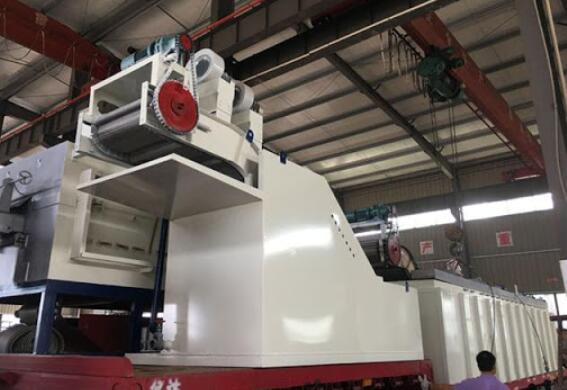SiC powder vacuum resistance sintering furnace

Description :
Silicon carbide sintering furnace is mainly used in New materials reaction sintered silicon carbide. The maximum temperature is 1800C. With glue, dust removal system, complete evacuation and sintering meanwhile, silicon carbide sintering furnace has horizontal and vertical two types. Silicon carbide (SiC), also known as carborundum, is a compound of silicon and carbon with chemical formula SiC. It occurs in nature as the extremely rare mineral moissanite. Silicon carbide powder has been mass-produced since 1893 for use as an abrasive. Grains of silicon carbide can be bonded together by sintering to form very hard ceramics that are widely used in applications requiring high endurance, such as car brakes, car clutches and ceramic plates in bulletproof vests. Electronic applications of silicon carbide as light-emitting diodes (LEDs) and detectors in early radios were first demonstrated around 1907, and today SiC is used in semiconductor electronics applications that are high-temperature, or high-voltage, or both. Large single crystals of silicon carbide can be grown by the Lely method; they can be cut into gems known as synthetic moissanite. Silicon carbide with high surface area can be produced from SiO2 contained in plant material.
SiC Applications:
Splinter deck & Armor protection, bulletproof : In war industry & military usage, SiC materials has very good performance in armor protection field, more light, more strong, it can offer reliable shield for soldier and pilot.
Abrasive and cutting tools: In the arts, silicon carbide is a popular abrasive in modern lapidary due to the durability and low cost of the material. In manufacturing, it is used for its hardness in abrasive machining processes such as grinding, honing, water-jet cutting and sandblasting. Particles of silicon carbide are laminated to paper to create sandpapers and the grip tape on skateboards.In 1982 an exceptionally strong composite of aluminium oxide and silicon carbide whiskers was discovered. Development of this laboratory-produced composite to a commercial product took only three years. In 1985, the first commercial cutting tools made from this alumina and silicon carbide whisker-reinforced composite were introduced by the Advanced Composite Materials Corporation (ACMC) and Greenleaf Corporation .
In the 1980s and 1990s, silicon carbide was studied in several research programs for high-temperature gas turbines in Europe, Japan and the United States. The components were intended to replace nickel superalloy turbine blades or nozzle vanes. However, none of these projects resulted in a production quantity, mainly because of its low impact resistance and its low fracture toughness.
Parameter :
Effective working zone size : 800 X 800 X 1000 mm
Max temperature : 1800
Pressure rising rate : 0.5
Ultimate pressure : 2 x 10-1 pa
Temperature uniformity : ±5






